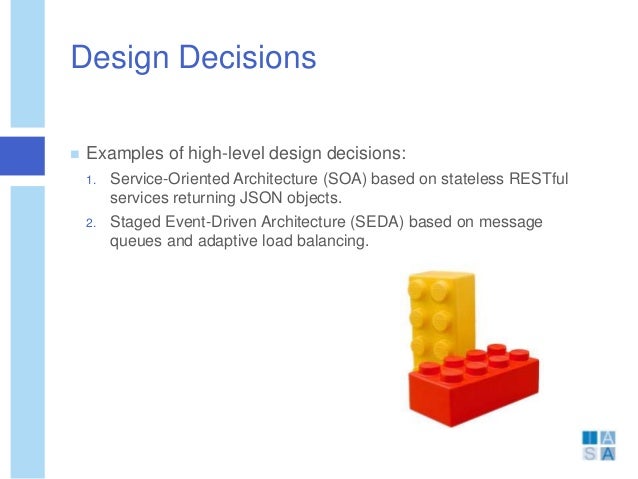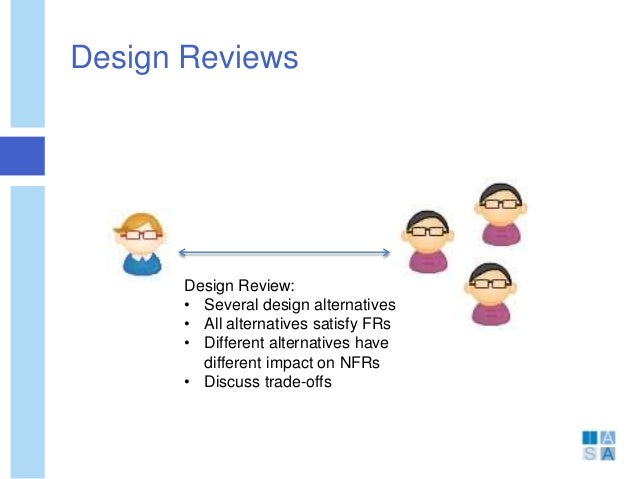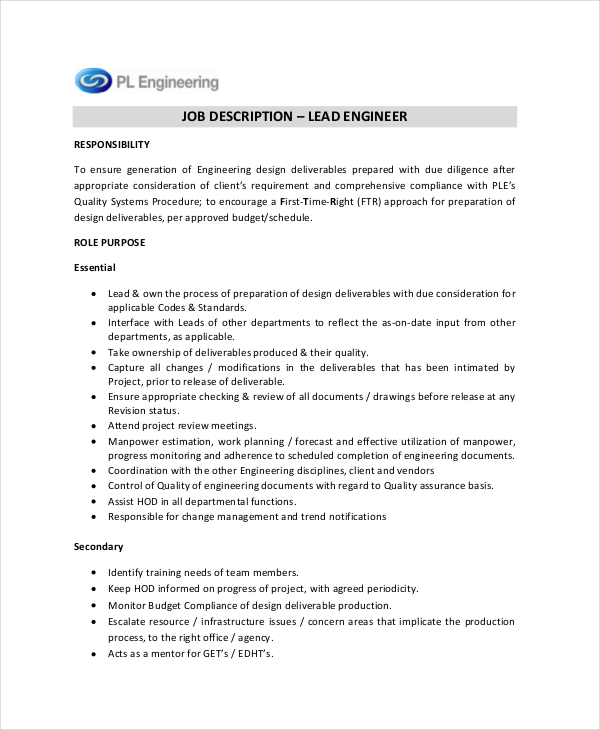

Ensuring that all architectural products and products with architectural input are maintained in the most current state and never allowed to seriously lag or become obsolete. Generating products such as sketches, models, an early user guide, and prototypes to keep the users and the engineers constantly up to date and in agreement on the system to be provided as it is evolving. Generating a set of acceptance test requirements, together with the designers, test engineers, and the users, which determine that all of the high-level requirements have been met, especially for the computer-human-interface. Ensuring that a maximally robust and extensible design is developed. Interfacing with the design and implementation engineers and architects, so that any problems arising during design or implementation can be resolved in accordance with the fundamental design concepts, and users' needs and constraints. Partitioning large systems into (successive layers of) subsystems and components each of which can be handled by a single engineer or team of engineers or subordinate architect.  Developing partitioning algorithms (and other processes) to allocate all present and foreseeable requirements into discrete partitions such that a minimum of communications is needed among partitions, and between the users and the system. Performing cost–benefit analyses to determine whether requirements are best met by manual, software, or hardware functions making maximum use of commercial off-the-shelf or already developed components. Ensuring that this set of high level requirements is consistent, complete, correct, and operationally defined. Generating the highest level of system requirements, based on the users' needs and other constraints. Interfacing with the user(s) and sponsor(s) and all other stakeholders in order to determine their (evolving) needs. In systems design, the architects (and engineers) are responsible for: In general, the role of the architect is to act as a mediator between the users and the engineers, reconciling the users' needs and requirements with what the engineers have determined to be doable within the given (engineering) constraints. Very large, highly complex systems may include multiple architects, in which case the architects work together to integrate their subsystems or aspects, and respond to a chief architect responsible for the entire system. However, in larger systems, a systems architect should be appointed to outline the overall system, and to interface between the users, sponsors, and other stakeholders on one side and the engineers on the other.
Developing partitioning algorithms (and other processes) to allocate all present and foreseeable requirements into discrete partitions such that a minimum of communications is needed among partitions, and between the users and the system. Performing cost–benefit analyses to determine whether requirements are best met by manual, software, or hardware functions making maximum use of commercial off-the-shelf or already developed components. Ensuring that this set of high level requirements is consistent, complete, correct, and operationally defined. Generating the highest level of system requirements, based on the users' needs and other constraints. Interfacing with the user(s) and sponsor(s) and all other stakeholders in order to determine their (evolving) needs. In systems design, the architects (and engineers) are responsible for: In general, the role of the architect is to act as a mediator between the users and the engineers, reconciling the users' needs and requirements with what the engineers have determined to be doable within the given (engineering) constraints. Very large, highly complex systems may include multiple architects, in which case the architects work together to integrate their subsystems or aspects, and respond to a chief architect responsible for the entire system. However, in larger systems, a systems architect should be appointed to outline the overall system, and to interface between the users, sponsors, and other stakeholders on one side and the engineers on the other. 
In small systems the architecture is typically defined directly by the developers.

The output of such work sets the core properties of the system and those that are hardest to change later. Their work includes determining multiple design and implementation alternatives, assessing such alternatives based on all identified constraints (such as cost, schedule, space, power, safety, usability, reliability, maintainability, availability, and other "ilities"), and selecting the most suitable options for further design. Systems architects interface with multiple stakeholders in an organization in order to understand the various levels of requirements, the domain, the viable technologies, and anticipated development process.
#SOFTWARE ARCHITECT ROLE DESCRIPTION SOFTWARE#
The title of systems architect connotates higher-level design responsibilities than a software engineer or programmer, though day-to-day activities may overlap. For example, the architect of an air traffic system needs to be more than superficially familiar with all of the tasks of an air traffic system, including those of all levels of users. Above all, the systems architect must be reasonably knowledgeable of the users' domain of experience. Because of the extensive experience required for this, the systems architect is typically a very senior technologist with substantial, but general, knowledge of hardware, software, and similar (user) systems. The systems architect's work should seek to avoid implementation issues and readily permit unanticipated extensions/modifications in future stages. Such definitions include: a breakdown of the system into components, the component interactions and interfaces (including with the environment, especially the user), and the technologies and resources to be used in its design and implementation. Systems architects define the architecture of a computerized system (i.e., a system composed of software and hardware) in order to fulfill certain requirements. The systems architect is an information and communications technology professional.








 0 kommentar(er)
0 kommentar(er)
